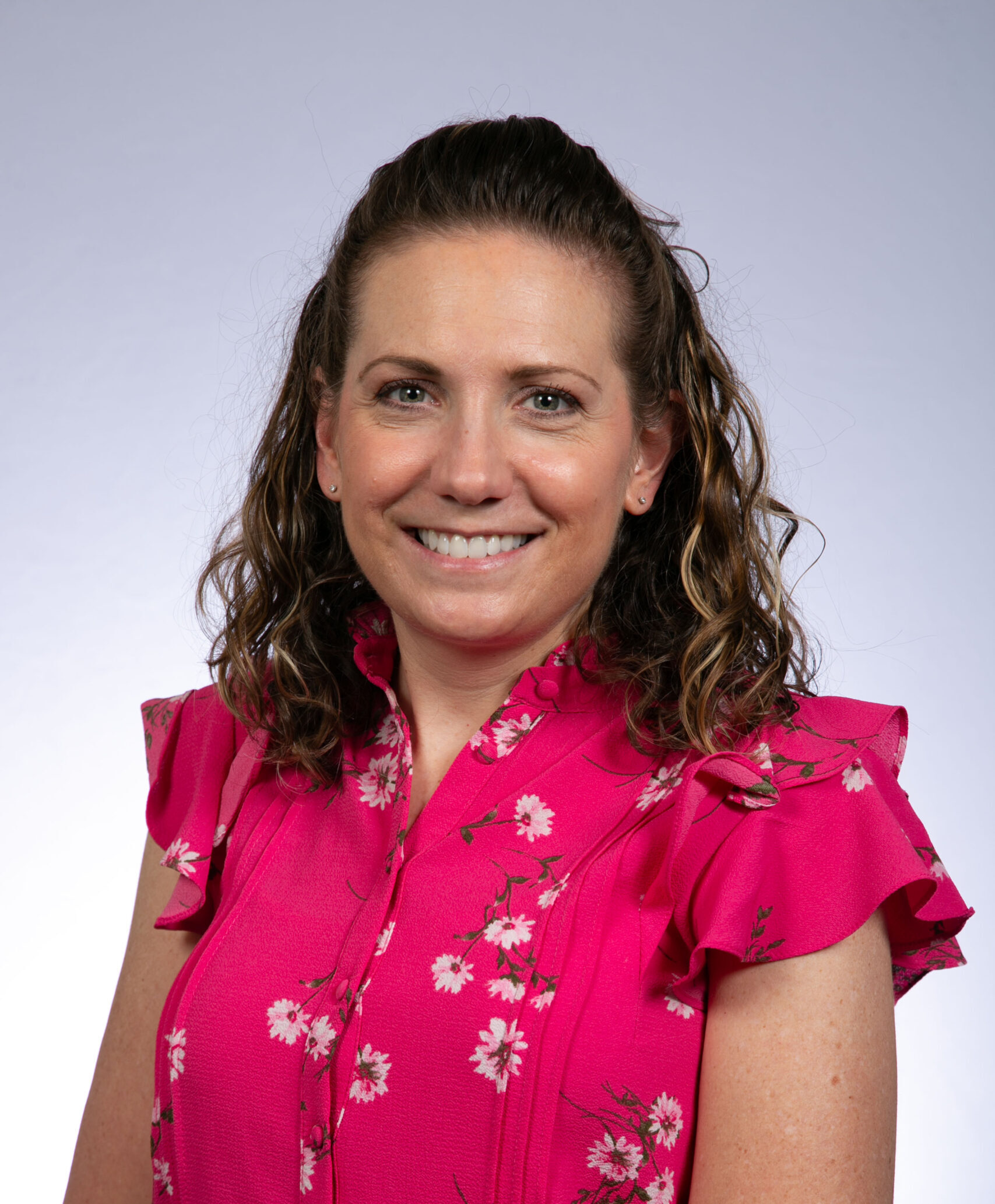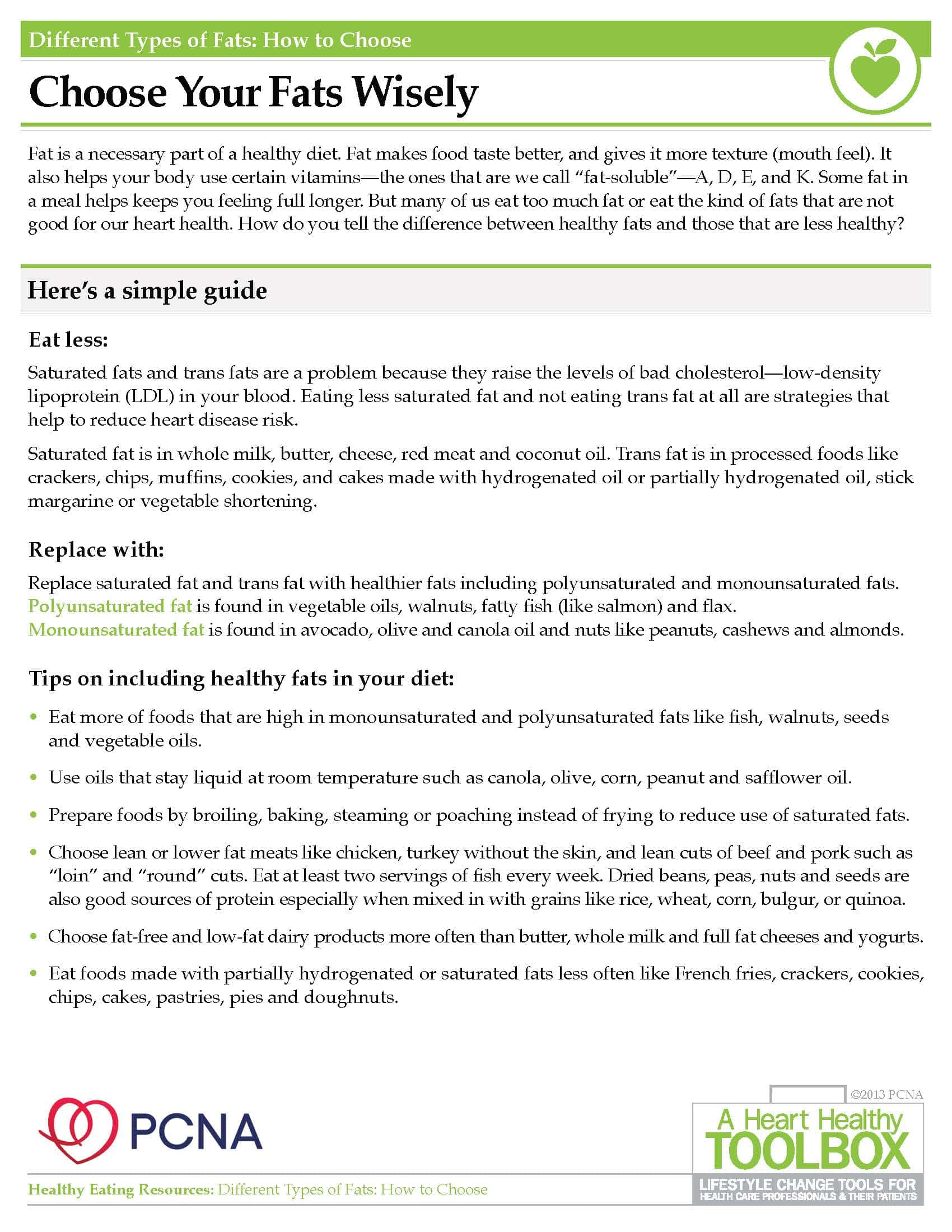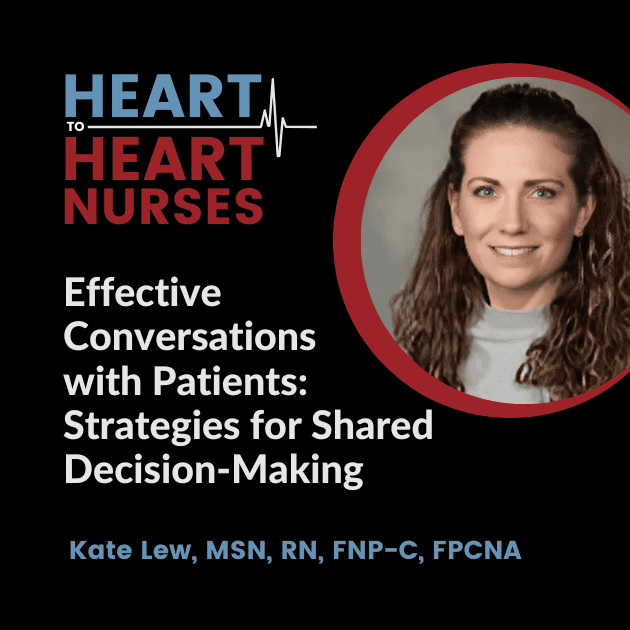For patients who are older or have complex diseases like hypertrophic cardiomyopathy, healthcare professionals who really listen can be the key to successful shared decision-making. Guest Kate Lew, MSN, RN, FNP-C, FPCNA, addresses effective strategies, a well as how to get involved beyond the clinical walls.
Welcome to Heart to Heart Nurses, brought to you by the Preventive Cardiovascular Nurses Association. PCNA’s mission is to promote nurses as leaders in cardiovascular disease prevention and management.
Geralyn Warfield (host): (00:20) I’d like to welcome back our audience to this episode of Heart to Heart Nurses. And today we have the great pleasure of talking with Kate Lew. Kate, could you introduce yourself please?
Kate Lew (guest): (00:29)
Thanks, yeah, and thanks for having me. My name is Kate, and I have been a nurse practitioner for over 10 years. I was a nurse for about five years prior to that. And all of my experience has been at the Mayo Clinic in Arizona. And worked both inpatient cardiology and now work in the outpatient setting for cardiology and seeing all of those patients and see a wide range of patients.
Over the last couple of years, I’ve also become the supervisor for the nurse practitioners and PAs in the clinic setting, so kind of have some experience in both clinical and more administrative roles.
Geralyn Warfield (host): (01:07) Well, you talked a little bit about a wide variety of things that you have done and expertise that you have, so, we’re going to cover a couple different topics today. And I’m hoping we could start talking about a growing population that we have here—and across the globe—and that is elderly patients and the care that we provide for them. Could you tell us a little bit more about that?
Kate Lew (guest): (01:26) Sure, sure. And in cardiology, that is a big swath of our patient panel are those patients who are elderly. And I think I won’t even get into the weeds of defining what elderly is because that’s a moving target.
But, you know, I think that those patients, particularly in the older years of elderly, so thinking, you know, 80 plus, it is a specific population, you know. Many people didn’t live that long, you know, not that long ago. And so, it is a unique population of patients to care for.
I think they’re some of the most enjoyable. They have some of the best stories. They always have something that they’re telling you. And I think many of them are really an inspiration. You know, you see these patients that come in and they’re just so vibrant doing all these different things. And I think it’s a real motivator to encourage our other patients who are younger to say, “Hey, no, you can live a really fulfilled and healthy life into your older years” versus maybe declining as they age.
I think also one of the challenges that we have when caring for older patients is that we don’t have a lot of studies. There’s not a lot of studies in people who are over 85 or into their 90s. And so, when having conversations about, ‘What do we do about their medications?’ and ‘Should we start a medicine or not?’ we just don’t have a lot to fall back on.
And I think then that’s where it becomes very individualized. You have to really look at the patient sitting in front of you and have that conversation also with their desires. They will tell you what they want or don’t want. And I recently had a patient, she was quite an inspiration. She came out and told me directly that she planned to live to 103 because her aunt had lived to 103 and she was going to pass her. And I was like, “Okay, then that will be our goal is to keep you on that trajectory.”
And then others of course, certainly come in and say, “I have no desire to keep myself alive for years and years and years because I’ve got these other health issues,” or other things. So, I think just broadly caring for the older patient is, you know, there’s a lot to it, but also specific to their cardiac health. You know, there can be a lot of things that have happened throughout their life, too.
Geralyn Warfield (host): (03:38) I think one of the things that you shared with us really is about listening to patients, which we should be doing for every patient. But particularly as people are coming towards the end of their life, really being respectful and listening to what those desires really are, as you’ve described. Because it can be a much different experience for somebody who wants to do whatever they can to live to be 103 or more versus somebody who feels like they’ve lived a full life and they don’t want, not necessarily extraordinary means, but they don’t want other medications or other procedures. They recognize that the human body has its limitations and they’re okay with that.
Kate Lew (guest): (04:14) Yeah, yeah. And I think that’s just it. You have to talk to your patient sitting in front of you. And really ask them where they are in their trajectory and where do they see themselves. And certainly, that’s not a one-time conversation. You’ve built a relationship, and I think that’s one of the pieces of outpatient practice that is special is that you, many times, are seeing that same patient over many appointments. And maybe your first interaction with them was real focused on following up after their hospital stay. And that was really just the focus of the conversation.
And then, you know, the next ones may be adjusting medications, but as you become, you know, more familiar with the patient, they’re familiar with you, maybe things are a little bit more stabilized, then you’re starting to maybe have some of those other pieces of the conversation about, you know, what is their goal of care? And, you know, where do we stand in that trajectory, like you described, of where they see themselves with their health?
And then also realizing sometimes it takes time. And we know in our elderly population particularly, which is frustrating, that as we get older, it just takes more time to recuperate after being in the hospital, even if it was for just a handful of days. And so, I think those are all important things to be thinking about when you meet with them, and you have those conversations. But you’re exactly right. There’s just lots of pieces to it, lots of complexity.
Geralyn Warfield (host): (05:34) Well, speaking of complexity, we have some patients that many of our clinicians are dealing with and those are patients with HCM or hypertrophic cardiomyopathy. What could you tell us about some specific ideas for working with that population?
Kate Lew (guest): (05:46) Sure, sure. Again, it goes back to that shared decision-making a lot of times with those patients. I think I started helping, well, throughout my whole career, I’ve cared for patients with HCM to various degrees. But over the last couple of years, I’ve specifically helped support the HCM clinic that we have. One of the big focuses was there was some new medications to the market. And so, we were really trying to kind of get ourselves coordinated and organized to help provide that service to patients.
And I think that HCM is unique in that it gives you a wide range of patients. I’ve cared for younger adults, certainly older adults, and so realizing that there’s this whole swath of patients, which is actually kind of encouraging and interesting. And so, what I would say is that when you’re approaching them, you are looking at that same shared decision-making like we were talking about before.
Whereas the younger patient may very much be focused on, “I want to be able to do XYZ exercise,” or “Why am I limited in this?” Or “I don’t want to take that medication for the next 40 years of my life.” And so, then that conversation that you’re having, of course, in the care team model with the physician and the nursing team is talking about what is best for that patient and what is their interest.
Whereas you may have another patient that says, “Hey, I don’t want a surgery. I know that. And I’m very interested in different medications and things that are out there.” I will share that with these newer medications and the very kind of rigid monitoring that we have to do with them, that’s a whole other piece of the conversation that you’re having with a patient about saying, “Hey, you really have to be committed, just like we have to be committed to these follow-ups.”
“And they’re mandated. And right now, we have to follow this protocol. And if that’s not something that you really feel like you’re going to be able to do, then we should just know that at the outset.”
And so, I think a lot of this is like having conversations and really seeing…and I think there’s also some disappointment in there, when patients feel like ‘I’m not getting better,’ or ‘Why did my number not look like this?’ or whatever the scenario is. It highlights some of the conversations we have with all of our patients. But in that population specifically, they can’t—that sounds very, I’m broad strokes here—but they do focus in on, “How am I feeling? and “Why am I not maybe seeing the same outcome that I heard could be possible?”
Geralyn Warfield (host): (08:21) Thank so much for sharing that information about working with elderly patients and those with HCM. We’re going to take a quick break, and we will be right back.
Geralyn Warfield (host): We’re back with Kate Lew, And we’re going to pivot our conversation from shared decision-making with some of our patients who might be elderly, and HCM, to discussing what it might be like for a nurse or an advanced practice provider, also known as an APP, how to be involved beyond the clinic walls. Could you talk about that for us, please?
Kate Lew (guest): (08:48) Sure, sure. As I mentioned at the start, my background is being a nurse and being very clinically-oriented or focused. And I think most of us who go into nursing, or become a nurse practitioner, or become a physician’s assistant, are very focused on the clinical shield, you know, following and caring for those patients and doing that day-to-day care. And I think that’s very important. And that may be where we feel most comfortable.
But also, we know thinking about advancing your career and being well-rounded and being involved in different areas is important. So, one of the things that I have really tried to encourage those on my team and fellow nurses and nurse practitioners is to really think about other ways to be involved. Or other things to get involved in.
And that could be things like a research project. And maybe, the involvement that you have is small. “Hey, I just have about an hour of time. Is there something that I can do during that window of time that would help advance the project?”
Also, you know, something much more broad. Are you writing the paper? Are you doing the whole thing? And I think that at least for me, when I first was thinking about being involved in different projects, I needed a very small chunk that I could bite off that was very circumscribed or had a very specific, you know, start and end date because that was that helped me to say, “No, I can commit to that little piece,” or, “I can commit to reviewing these five items,” and then feel like I was involved and contributing.
I would say we have the great pleasure of working with many physician colleagues that are inclusive of APPs and nurses in in different projects. So, I think that’s a real benefit of where I currently work.
But I also, as being involved in PCNA, I’ve really wanted nurses to also step up. And one way I could do that with my colleagues was encourage them to help with PCNA, whether that be speaking or different things like that. Because I think that I know myself as a nurse, I wasn’t really thinking along the lines of many of these other ways of being involved in different activities.
I can think of other activities; research is its own topic, certainly. And some people are not too interested in that area. But thinking about education, or advancing others, or working on quality improvement projects. I think sometimes it just takes thinking more broadly about what are other aspects of—it is patient care, but what other aspects of that that could make you feel fulfilled?
Because I think that sometimes the data, particularly in clinic, the day-to-day clinic: messages coming, patients being seen, and it just sort of is a rinse and repeat, it can get tiring, especially when you haven’t had any reprieve for some time. And so, thinking about those other opportunities can be really helpful and kind of rejuvenating.
Geralyn Warfield (host): (11:52) I really appreciate that you hit on the importance of getting involved as a personal affirmation in many ways because you are right, in the clinical setting it can become not necessarily mundane, but it feels like it’s the same day every day. It’s like Groundhog Day someday as a clinician, I suspect.
And so, by putting yourself outside of the clinic walls you not only are contributing to the profession, but you are helping yourself feel a little bit better about things. And I think that’s very important, particularly as our situations sometimes are very complex and getting more complex and more stressful, it’s great to be able to contribute.
Kate Lew (guest): (12:31) No, I agree. Yes. And I think one of the key things is, really, you know, as a nursing and or nurse practitioner and PA team is really advocating and trying to advocate for being involved in these different projects. I think one of the number one things that I heard from my team as to when we asked about, you know, “What’s stopping you from being involved?” or “What’s that limiting step there? What is the thing that’s the hurdle to cross?”
Certainly, some just were in that point in their career where they were maybe early career and just really heavily focused on the clinical arm of things and just wanted to feel really confident in their day-to-day care of patients. And that was really where their heavy focus was, which is great. That’s great.
Many who were more like myself, had been working for a while and felt pretty confident in that clinical role, wanted to think about, “Well, what are the other things that I could be doing? What else does that look like?”
And the number one thing we heard was that “I don’t have time. When am I going to do this? Gosh, I don’t really feel like I have time to do this during my clinical day. I don’t really feel like I have time to do this when I’m at home because I’ve got other commitments.”
And so, one of the things we really pushed and tried to advocate for was having a system in place where someone could apply for hours that we would set aside for them to work on specific activities. And it had to fulfill education research, you know, some various area of that. And then we would carve out time.
Now granted, this has to be supported by your administration, but I think that has really encouraged at least the nurse practitioners and PAs in our department to be involved in other things. And to open that, kind of open their eyes to say, “Gosh, I would be willing to work on this if I can have some carved out time to do so.”
Geralyn Warfield (host): (14:20)
I really appreciate the conversation that we’ve had today. Do you have one key takeaway that you would like our listeners to [have] after listening?
Kate Lew (guest): (14:29)
Gosh, what a hard question to answer! I think, kind of going back to our first piece of our conversation, I would say that really getting to know your patient and understanding where your patient is, is one of the key things. And I think that’s the same thing when you maybe work with nurses or nurse practitioners and PAs or anyone for that matter, that you’re really understanding where are they, also, in their career and how can you help to encourage them where they currently are. And then, also talk about career advancement or different opportunities.
So, I think it’s applicable to all of us in some way, so whether it’s our patients or our colleagues and peers.
Geralyn Warfield (host): (15:09)
It has been great to have Kate Lu in conversation and we really are grateful to you for your time. This is Geralyn Warfield, your host, and we will see you next time.
Thank you for listening to Heart to Heart Nurses. We invite you to visit pcna.net for clinical resources, continuing education, and much more.
Topics
- Lifestyle and Behavior Change
Published on
April 21, 2025
Listen on:

MSN, RN, FNP-C
Related Resources







